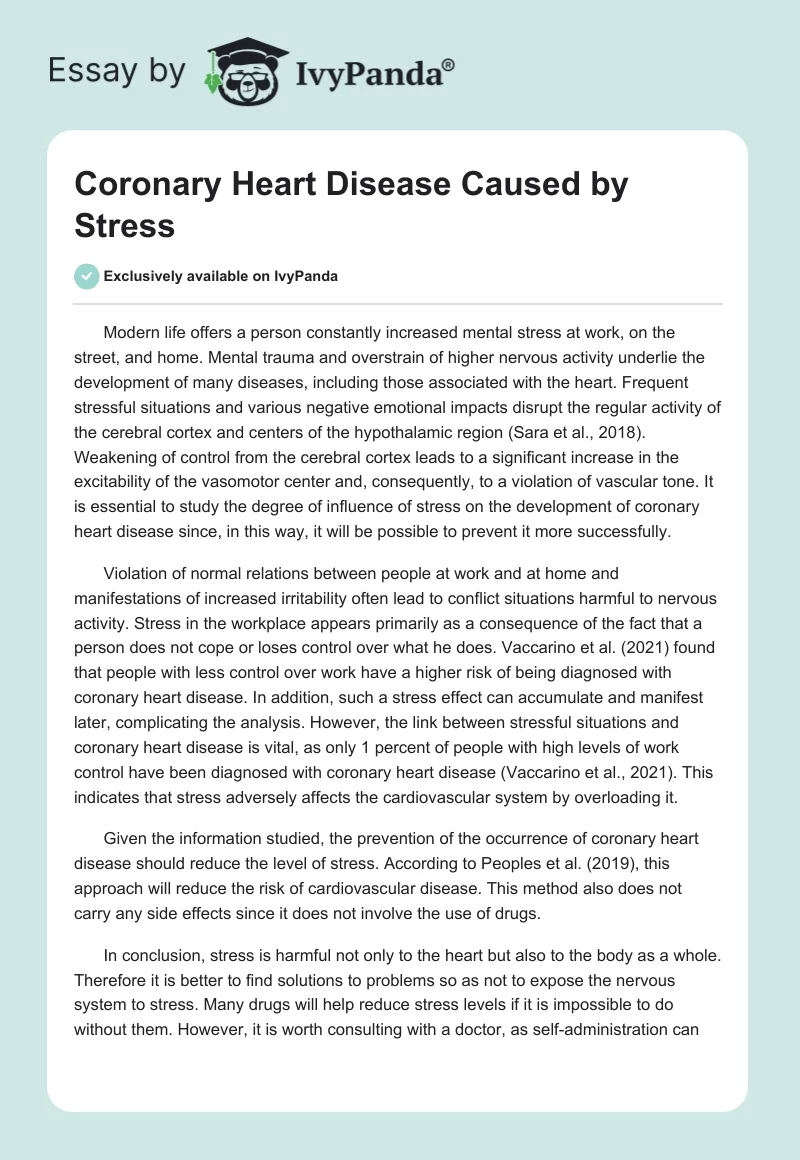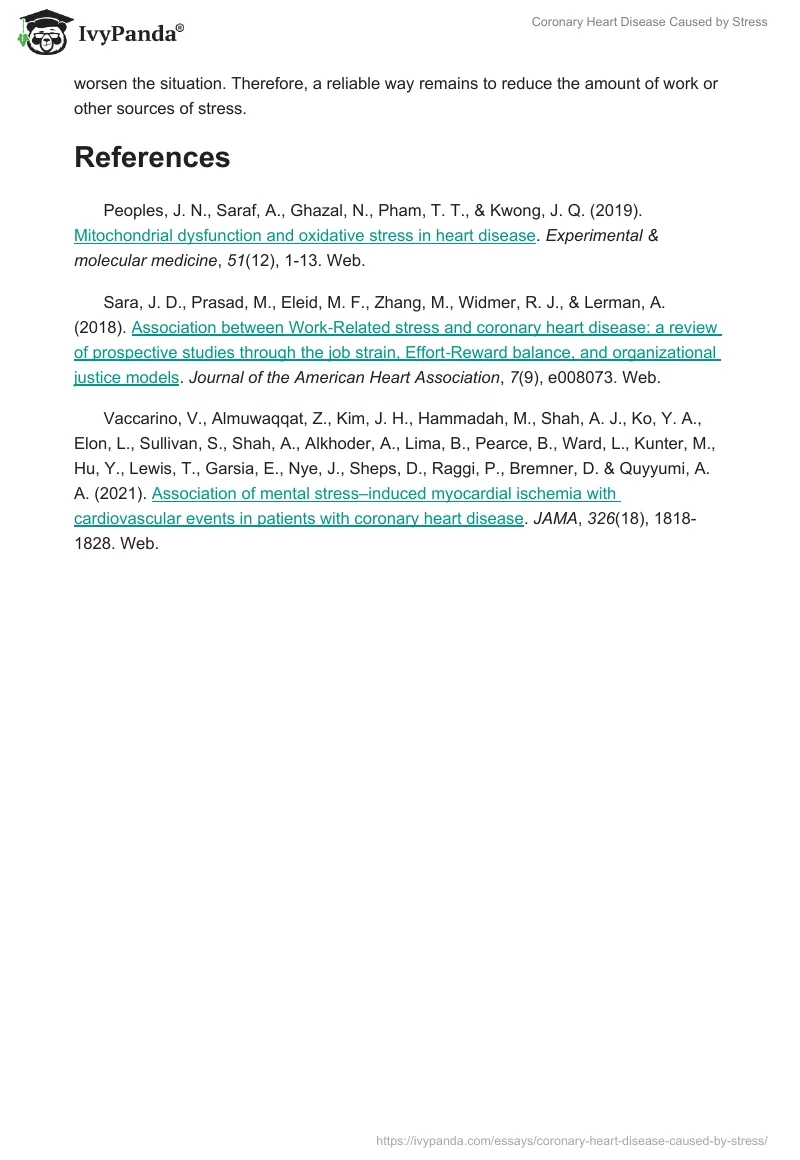Modern life offers a person constantly increased mental stress at work, on the street, and home. Mental trauma and overstrain of higher nervous activity underlie the development of many diseases, including those associated with the heart. Frequent stressful situations and various negative emotional impacts disrupt the regular activity of the cerebral cortex and centers of the hypothalamic region (Sara et al., 2018). Weakening of control from the cerebral cortex leads to a significant increase in the excitability of the vasomotor center and, consequently, to a violation of vascular tone. It is essential to study the degree of influence of stress on the development of coronary heart disease since, in this way, it will be possible to prevent it more successfully.
Violation of normal relations between people at work and at home and manifestations of increased irritability often lead to conflict situations harmful to nervous activity. Stress in the workplace appears primarily as a consequence of the fact that a person does not cope or loses control over what he does. Vaccarino et al. (2021) found that people with less control over work have a higher risk of being diagnosed with coronary heart disease. In addition, such a stress effect can accumulate and manifest later, complicating the analysis. However, the link between stressful situations and coronary heart disease is vital, as only 1 percent of people with high levels of work control have been diagnosed with coronary heart disease (Vaccarino et al., 2021). This indicates that stress adversely affects the cardiovascular system by overloading it.
Given the information studied, the prevention of the occurrence of coronary heart disease should reduce the level of stress. According to Peoples et al. (2019), this approach will reduce the risk of cardiovascular disease. This method also does not carry any side effects since it does not involve the use of drugs.
In conclusion, stress is harmful not only to the heart but also to the body as a whole. Therefore it is better to find solutions to problems so as not to expose the nervous system to stress. Many drugs will help reduce stress levels if it is impossible to do without them. However, it is worth consulting with a doctor, as self-administration can worsen the situation. Therefore, a reliable way remains to reduce the amount of work or other sources of stress.
References
Peoples, J. N., Saraf, A., Ghazal, N., Pham, T. T., & Kwong, J. Q. (2019). Mitochondrial dysfunction and oxidative stress in heart disease. Experimental & molecular medicine, 51(12), 1-13. Web.
Sara, J. D., Prasad, M., Eleid, M. F., Zhang, M., Widmer, R. J., & Lerman, A. (2018). Association between Work‐Related stress and coronary heart disease: a review of prospective studies through the job strain, Effort‐Reward balance, and organizational justice models. Journal of the American Heart Association, 7(9), e008073. Web.
Vaccarino, V., Almuwaqqat, Z., Kim, J. H., Hammadah, M., Shah, A. J., Ko, Y. A., Elon, L., Sullivan, S., Shah, A., Alkhoder, A., Lima, B., Pearce, B., Ward, L., Kunter, M., Hu, Y., Lewis, T., Garsia, E., Nye, J., Sheps, D., Raggi, P., Bremner, D. & Quyyumi, A. A. (2021). Association of mental stress–induced myocardial ischemia with cardiovascular events in patients with coronary heart disease. JAMA, 326(18), 1818-1828. Web.


